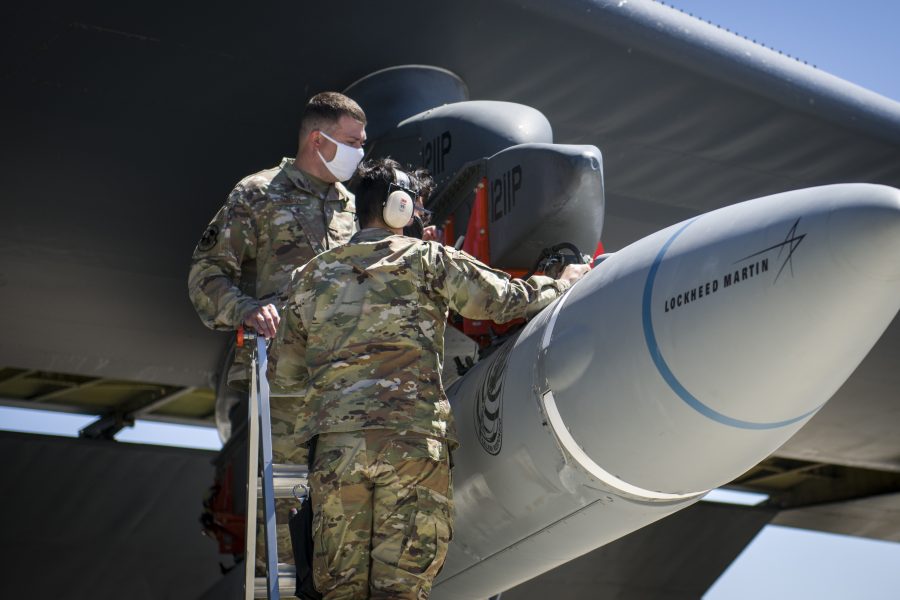Lawmakers weighed in on three of the Air Force’s top-priority technology development efforts in the final draft of the fiscal 2021 defense policy bill, offering more money and more oversight as the programs mature.
The Low-Cost Attritable Aircraft Technology initiative earned another $50 million to speed up progress toward designing unmanned aircraft that can assist fighters and other fleets in combat. The Air Force wants essentially disposable drones that are relatively inexpensive to replace and can perform missions that might be too risky for a human pilot or more valuable airframe.
LCAAT has so far produced prototype aircraft like the XQ-58A Valkyrie, a Kratos-built system that is part of the Air Force’s Skyborg AI-powered wingman drone program.
If the bill is signed into law, Congress by March 1 wants the Air Force’s acquisition boss to report back on “an executable plan for the operational test and utility evaluation” for systems in the LCAAT portfolio and brief lawmakers on that plan.
“Combined application of commercial technology, autonomy, and artificial intelligence could be an innovative solution to meet the operational demands of the combatant commanders in support of the National Defense Strategy,” the legislation notes.
For hypersonic weapons, lawmakers call for a more concerted look at the military’s ability to test the newly speedy, flexible designs. They offer $381.9 million for Air Force hypersonic weapons prototyping in 2021, including programs like the Air-Launched Rapid-Response Weapon and the Hypersonic Attack Cruise Missile.
“The Secretary of Defense shall take such actions as may be necessary to improve ground-based test facilities used for the research, development, test, and evaluation of hypersonic capabilities,” the bill states. The secretary should also “increase the rate at which hypersonic capabilities are flight-tested to expedite the maturation and fielding of such capabilities.”
Within 60 days of the law’s enactment, the Chief of Staff of the Air Force and Pentagon research chief are directed to send the congressional defense committees a plan for fielding air-launched and air-breathing hypersonic weapons in the next three years. That must be accompanied by a report on whether related testing capabilities and infrastructure is sufficient, and how it could be improved.
“The conferees direct the Secretary of Defense to submit a report to the congressional defense committees, not later than 180 days after the date of the enactment of this act, on the costs and benefits of the use and potential refurbishment of existing active and inactive federal and university research and testing facilities to support hypersonics activities of the Department of Defense,” Capitol Hill added.
Lawmakers also called for the Pentagon’s independent cost-assessment office to review the Air Force and Navy’s next-generation air dominance programs that aim to field cutting-edge systems that would follow the F-35 Joint Strike Fighter. They similarly want that office to review the cost and viability of the Air Force’s “digital Century Series” initiative, which looks to rapidly pump out small batches of new aircraft every few years.
The legislation authorizes $974 million for NGAD, $70 million lower than requested because that money was used sooner than expected. Defense News reported in September that the Air Force secretly built and flew at least one full-scale prototype aircraft, surprising aviation watchers who thought that milestone was far off.
The National Defense Authorization Act passed the House 335-78 on Dec. 8, and is expected to pass in the Senate as well. President Donald J. Trump must still approve the bill for it to become law, but has promised a veto over priorities that did not land in the final version.


